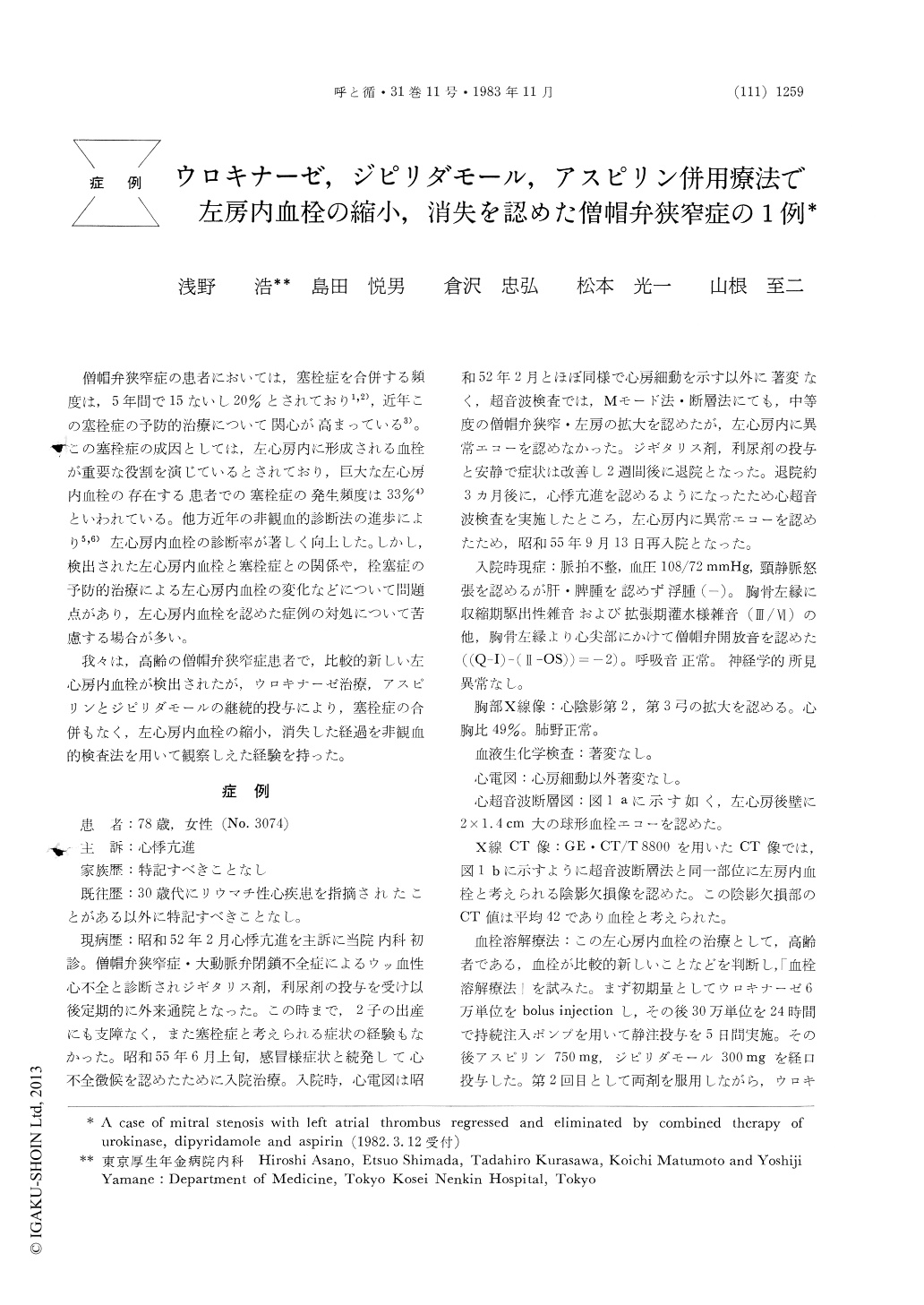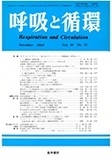Japanese
English
- 有料閲覧
- Abstract 文献概要
- 1ページ目 Look Inside
僧帽弁狭窄症の患者においては,塞栓症を合併する頻度は,5年間で15ないし20%とされており1,2),近年この塞栓症の予防的治療について関心が高まっている3)。この塞栓症の成因としては,左心房内に形成される血栓が重要な役割を演じているとされており,巨大な左心房内血栓の存在する患者での塞栓症の発生頻度は33%4)といわれている。他方近年の非観血的診断法の進歩により5,6)左心房内血栓の診断率が著しく向上した。しかし,検出された左心房内血栓と塞栓症との関係や,栓塞症の予防的治療による左心房内血栓の変化などについて問題点があり,左心房内血栓を認めた症例の対処について苦慮する場合が多い。
我々は,高齢の僧帽弁狭窄症患者で,比較的新しい左心房内血栓が検出されたが,ウロキナーゼ治療,アスピリンとジピリダモールの継続的投与により,塞栓症の合併もなく,左心房内血栓の縮小,消失した経過を非観血的検査法を用いて観察しえた経験を持った。
Thromboembolism is an important comlication of mitral stenosis. The thrombi formed in the left atrium are held responsible for this complication also patients with low cardiac output and atrial fibrillation are at the highest risk from thrombo-embolism.
Progress in non-invasive diagnostic method in recent years has easily made the diagnosis of thrombi in the left atrium. We lately encountered a patient with relatively fresh thrombus within the left atrium in whom the regression of the thrombus with Urokinase treatment and continuous administration of Aspirin and Dipyridamole was followed up to its eventual disappearance by non-invasive diagnostic method.

Copyright © 1983, Igaku-Shoin Ltd. All rights reserved.


